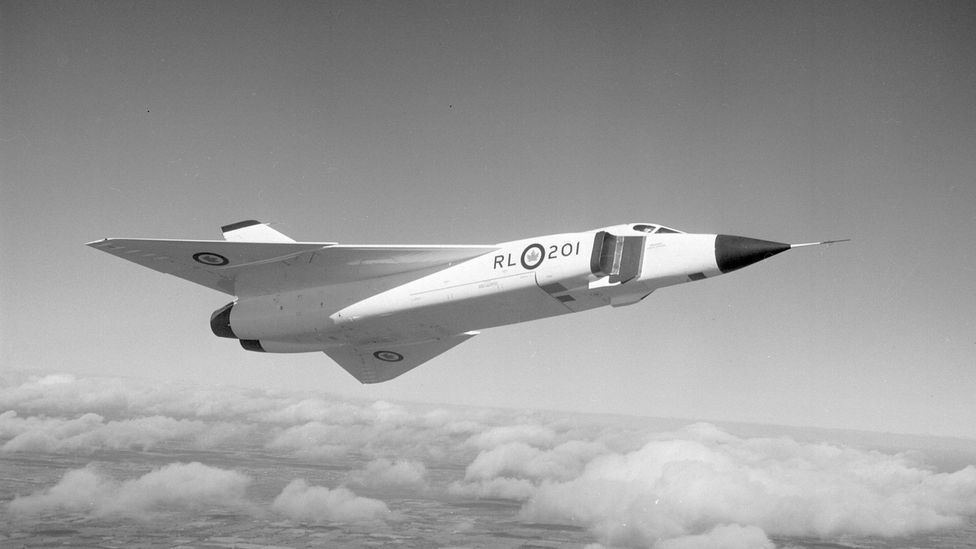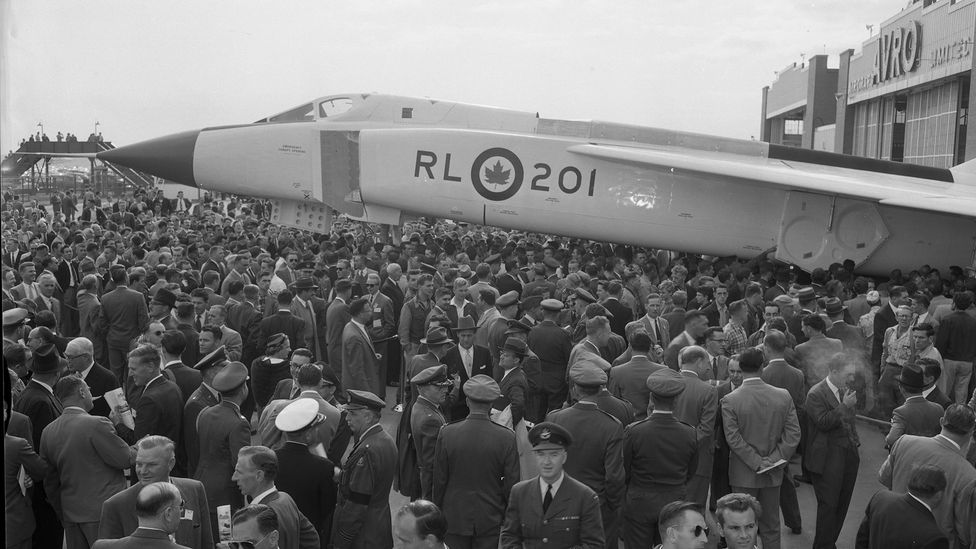The record-breaking jet which still haunts a country:

In the early years of the Cold War, Canada decided to design and build the most advanced fighter aircraft in the world.
Canada is well known for its rugged bush planes, capable of rough landings and hair-raising take-offs in the wilderness. From the late 1930s, the North American country had also started to manufacture British-designed planes for the Allied war effort. Many of these planes were iconic wartime designs like the Hawker Hurricane fighter and Avro Lancaster bomber.
Ambitious Canadian politicians and engineers weren’t satisfied with this. They decided to forge a world-leading aircraft manufacturing industry out of the factories and skilled workforce built up during the war. Tired of manufacturing aircraft designed by others, this new generation of Canadian leaders were determined to produce Canadian designs. Avro Aircraft, the Canadian airplane maker created after the war, was the company that would deliver their dream.
Freed from the set ways-of-thinking of Avro’s more established rivals, the firm’s engineers were able to work on revolutionary jet fighters, commercial airliners, flying saucers and even a space plane. They placed Canada at the technological cutting edge of the new Jet Age.
In so doing, these engineers challenged notions of what small countries like Canada could achieve in the hi-tech industries of the day, even if convincing politicians to stump up the cash for them was an altogether trickier business.
Then came the Arrow. On 4 October 1957, 14,000 people watched a large hangar on the outskirts of Toronto open to reveal a beautiful, large, white, delta-wing aircraft. The plane was the Avro Arrow interceptor. A third longer and broader than today’s Eurofighter Typhoon, the Arrow could fly close to Mach 2.0 (1,500 mph, or the maximum speed of Concorde), and had the potential to fly even faster. It was Canada’s Can$250m (US$1,58bn today) bid to become an aviation superpower.The project was genuinely ground-breaking. Avro’s engineers had been allowed to build a record-breaker without compromise. But Canadians would soon discover that the supersonic age had made aviation projects so expensive that only a handful of countries could carry them out – and Canada, unfortunately, wasn’t one of them.
The advert for Avro Aircraft celebrating the “first 50 years of powered flight in Canada 1909–1959” had only just been printed when on “Black Friday”, 20 February 1959, the loudspeaker of the Avro Aircraft factory on the outskirts of Toronto crackled to life. Thousands of workers heard the company president announce “that f------ prick in Ottawa” (the newly elected Canadian prime minister John Diefenbaker) had cancelled the entire Arrow programme. Later that day, 14,500 skilled men and women lost their jobs. Many of these engineers joined the brain-drain to the United States. The "Avro group" of 32 engineers playing critical roles in Nasa's Apollo programme, which – ironically – beat the Soviets in the race to land a man on the moon.

There is an old Canadian joke that says the best thing that happened to America was the cancellation of the Arrow
It's an interesting read and shows how one leader could change the fortunes of a nation. Today, what is Trudeau fighting for...to assemble Chevys! Trump wants a Space Force!
